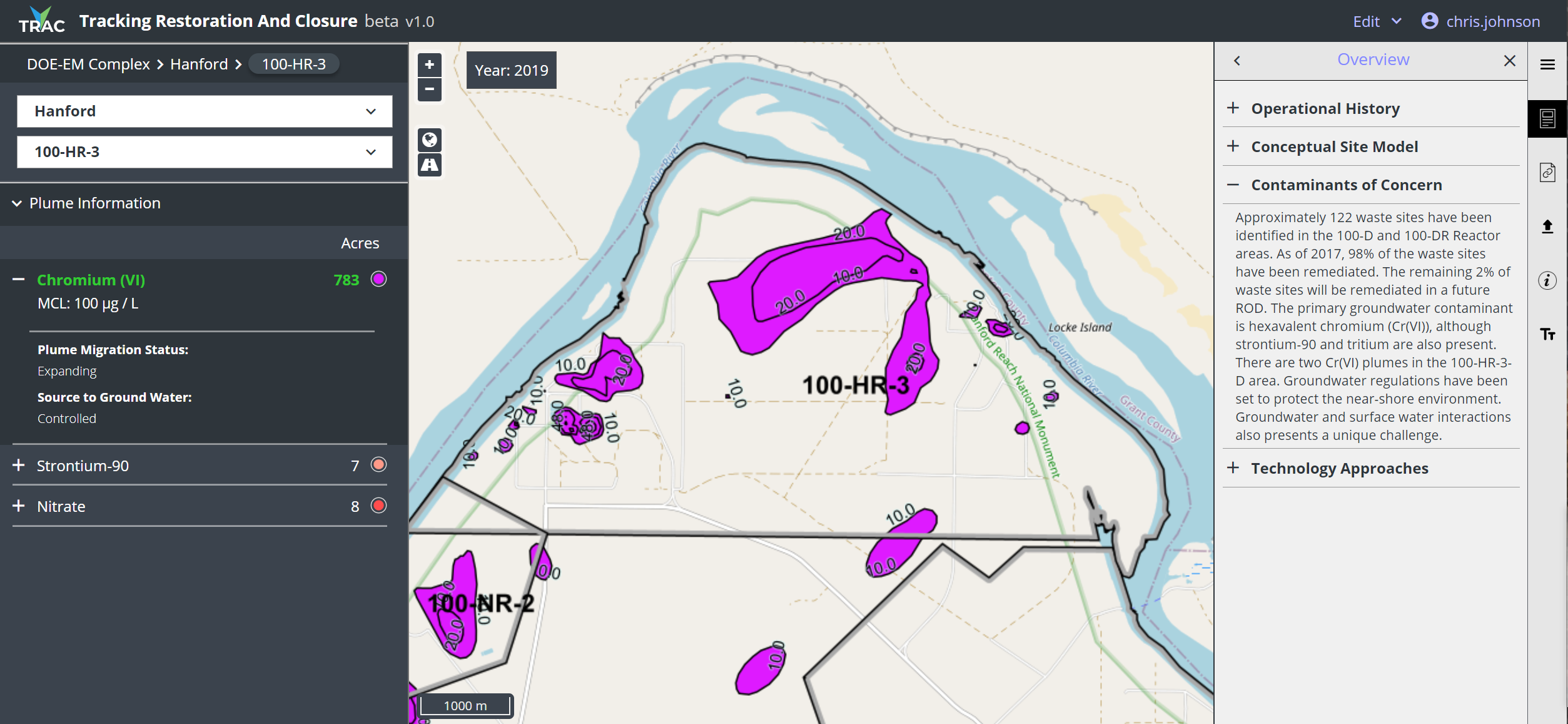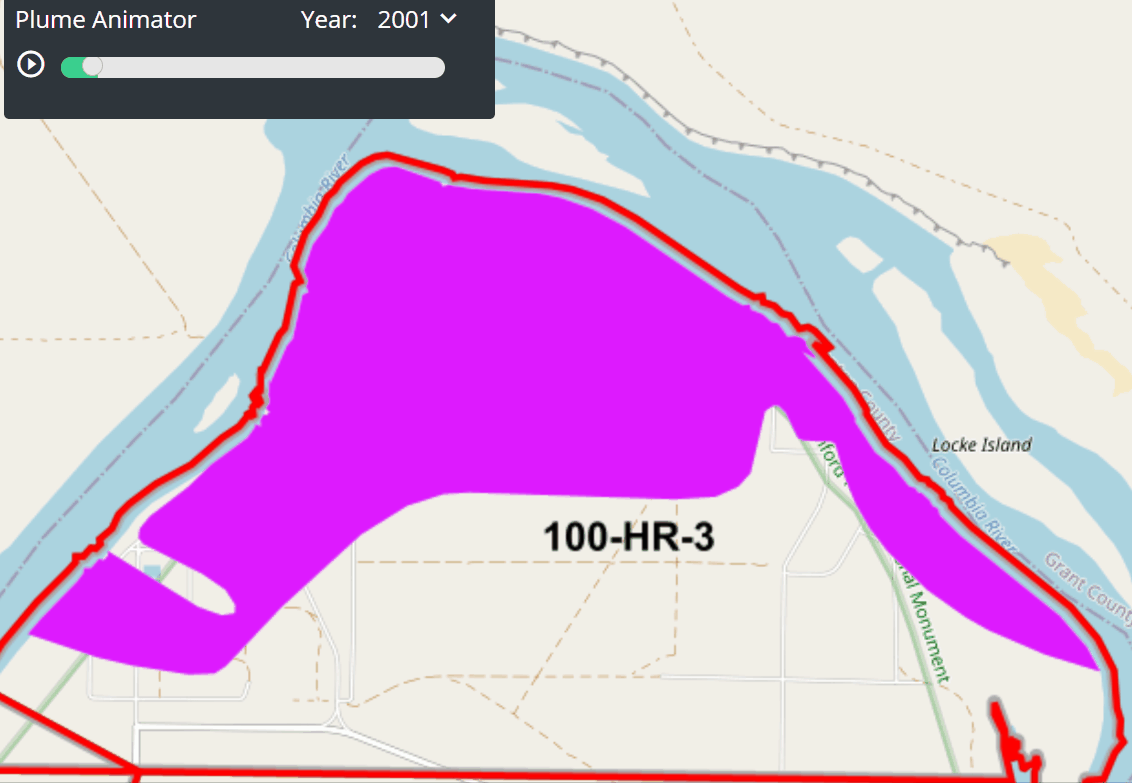TRAC Data
The TRAC web application provides summary information on environmental restoration and progress toward closure at three levels of detail: EM complex, EM site, and waste management unit. Each level includes corresponding narrative information on history, cleanup challenges, remediation goals, conceptual site model, technology approaches, cleanup priorities, and progress. Metrics about contaminant plumes, regulatory context/status, and remediation technology approaches are defined for each contaminant at the waste management unit level, and are rolled up into totals at the EM site and EM complex-wide levels.
- The EM complex level focuses on high-priority contaminants of concern, displaying metrics and identifying sites having a given contaminant plume.
- The EM site level provides the geospatial footprint of groundwater plumes and site-specific information and metrics on progress toward site closure.
- The waste management unit level—such as the Hanford 100-HR-3 operable unit—provides detailed visualization of contoured groundwater concentrations, and specific metrics on the status of groundwater cleanup.

Plume metrics include the geospatial depiction of the plume on the map, area of the plume footprint, and status of the plume (e.g., controlled, off-site impacts) and source (e.g., active, controlled, not present). For sites that have provided historical plume maps, a plume animator is available to see the progression of a plume over time.

The regulatory metrics include identification of the controlling regulatory framework [e.g., Resource Conservation and Recovery Act (RCRA), Comprehensive Environmental Response, Compensation, and Liability Act (CERCLA)], the regulatory stage/status [e.g., Remedial Investigation/Feasibility Study (RI/FS), Record of Decision (ROD)], and the associated regulatory documents.
Technology information describes the technologies applied (e.g., pump-and-treat, monitored natural attenuation, in situ chemical treatment, in situ thermal treatment), implementation status (e.g., not yet implemented, treatment plan implemented, remedy performing as designed), and specific technology metrics such as mass removed/retained by the treatment technology.
Sites will update their data annually. For further information on DOE-EM sites, see: https://www.energy.gov/em/cleanup-sites